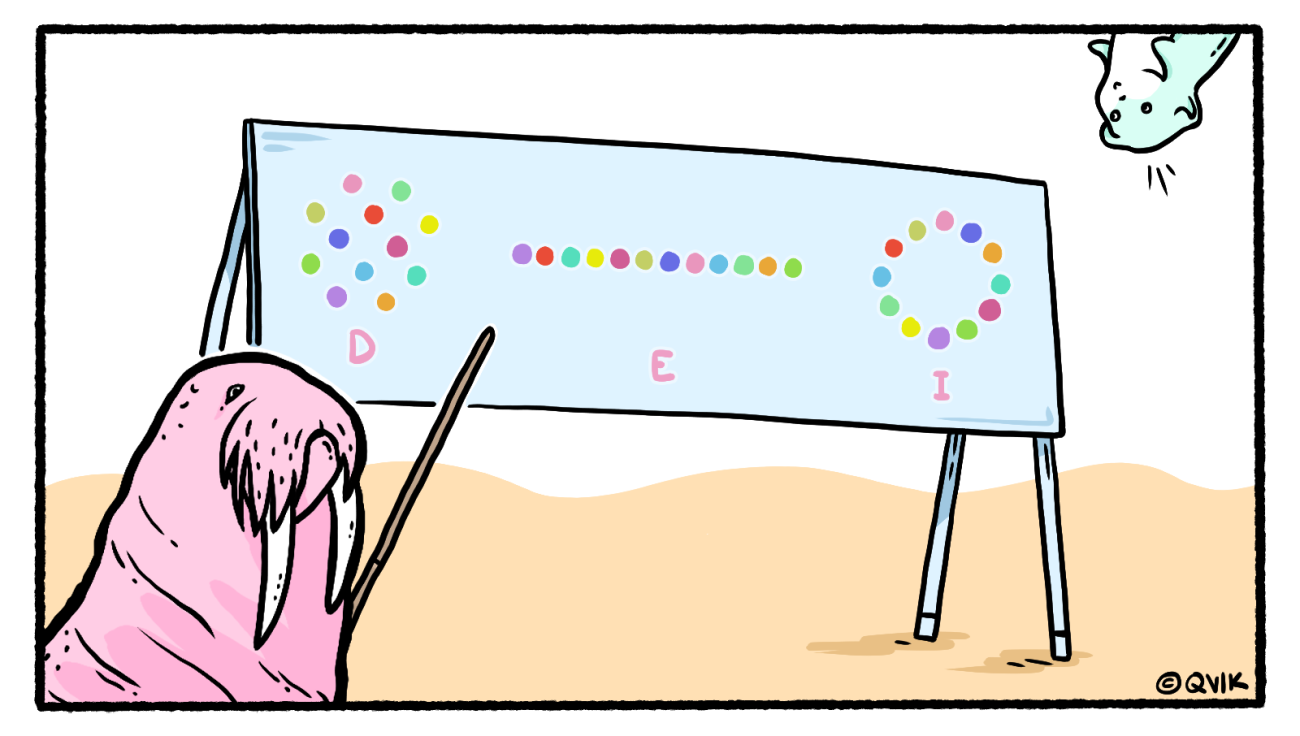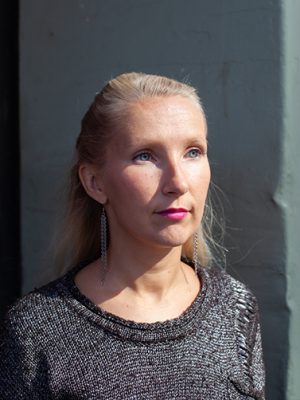
Deep-dive into Qvik’s diversity, equity and inclusion roadmap
It’s time to share the concrete actions, goals and KPIs we’ve set for our DEI process, as well as the risks related to improving DEI at Qvik.
This year has brought us a lot of new and exciting data on diversity, equity and inclusion. We completed a SWOT analysis last fall, which revealed differences in DEI maturity between different business areas and teams in our company – which is totally normal. Right now, DEI at Qvik is evenly poised between great opportunities and some very real risks.
Our DEI task force has been busily building visibility inside our company, defining their team’s ways of working, and setting up channels and sessions for info sharing and sparring. Diversity, equity and inclusion is now also a part of our company-level objectives and key results (OKR), where it belongs as an important part of our strategy.
Our DEI strategy development was kicked off by excellent workshops hosted by Inklusiiv’s Yesmith Sánchez and Maija Koponen, who also consulted us on the strategy. Having a partner like Inklusiiv helps us define and understand diversity, equity and inclusion as a natural part of our culture and journey.
If you want to read our first blog post about why DEI matters and what it means to us at Qvik, check out our article Getting real with diversity, equity and inclusion with help from Inklusiiv.
Diversity, equity and inclusion gives meaningful goals to work towards
In September, we did a SWOT analysis of the current state of DEI at Qvik and started drafting our concrete next steps. The analysis helped us create development measures and finalize action plans based on our company goals. In addition, it revealed priorities and helped us put the measures in order with a visual representation of company-level owners for each measure.
“A goal without a plan is just a wish.”
Antoine de Saint-Exupéry
In short, the DEI roadmap is needed to outline the major steps of internal DEI development. The roadmap obviously allows us to review goals at different impact levels, too.
We grouped our goals into thematic groups based on the business objectives, our SWOT analysis and the main focus areas. The goals were also categorized based on their impact level, with some focusing more on change at the individual level and others on the societal level.
Our main goals for 2023 are:
- Improving DEI awareness internally
- Increasing the sense of inclusion for everyone at Qvik
- Ensuring that the recruitment process is inclusive
- Doing our part to build a more inclusive society

Our DEI goals have been defined and put on the roadmap with the KPIs. So is this it, are we ready to roll? Before we got started, one critical question still needed to be answered:
Could we identify any reasons why this roadmap wouldn’t work?
Common pitfalls of DEI programs
We noticed that we might have succumbed to the common pitfall of overly optimistic time management. Also, some of our actions – for example, in recruitment and employer branding – needed to be combined rather than executed individually.
Achieving DEI goals can be challenging, and the process involves a number of risks. No matter how realistic or relevant actions you have planned, there are many ways in which a roadmap can fail. Inklusiiv lists the following as the usual suspects:
- The program is built on assumptions, not insight and data
- An excessively programmatic approach – no flexibility in implementation
- An exclusive focus on behavioural change
- No commitment from the leadership
- Lack of resources
- Reliance on volunteers or minority groups
Regardless of all the careful planning to ensure that we will reach our goals, we are painfully aware of the risks. To mitigate these, we need to pay attention to the following issues:
- Improving our data collection systems to also support the continuous collection of relevant metrics on diversity, equity and inclusion.
- Getting everyone at Qvik onboard, as DEI isn’t just our task force’s “development project” – major changes can be needed, which is why all Qvikies need to understand that DEI benefits everyone in the company.
- The resources (money and time) we need to allocate to DEI for it to remain in the spotlight.
Identifying these risks is vital, but so is taking measures to avoid them. Outside help is more than welcome here to put all the options on the table.
What next?
Companies that plan to make DEI a part of their development roadmaps often forget that striving for a more diverse and inclusive workplace isn’t just a one-off development project. It’s a continuous journey.
Just like in software development and design, working on DEI should be an iterative and incremental process in which learning (and failing) happens early and often. Taking this mindset from our own consultancy work and applying it to understanding and promoting DEI is a valuable insight.
To succeed, a DEI plan must always align with business objectives and give a competitive edge to the company. There is a tendency to lump DEI with HR issues because of its links to culture development, recruitment, and retention.
Instead of featuring on Board mission slides or HR development roadmaps, diversity, equity and inclusion should be felt in every part of the organization – from values, processes, and leadership to all communication.
A DEI roadmap is an important part of keeping track of the goals, but the actions taken to reach them also need to be visible, measurable, constant and ongoing.
In concrete terms, our roadmap actions are already having an impact on key results at the company level, building our Code of Conduct, setting up monthly town hall meetings, internal and external communications, and development processes. Most importantly, we are talking more about DEI matters from different perspectives at Qvik.
Our task force has been a torch-bearer and led by example in making DEI a visible, constant, and ongoing part of communication and running things. But like I said, we need to get every Qvikie on board with the change. This requires more education and training and further cooperation between our offices in Sweden and Finland.





